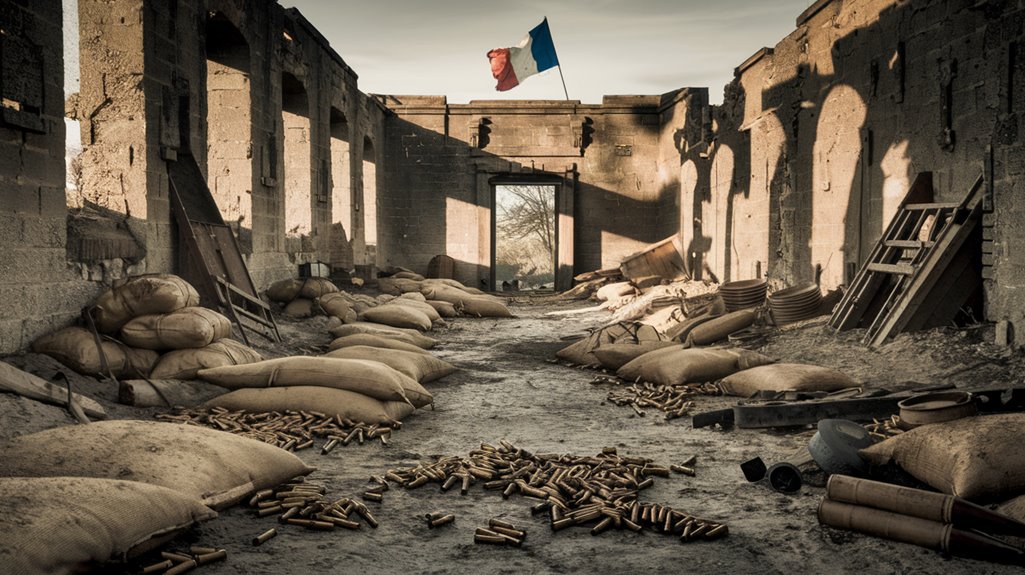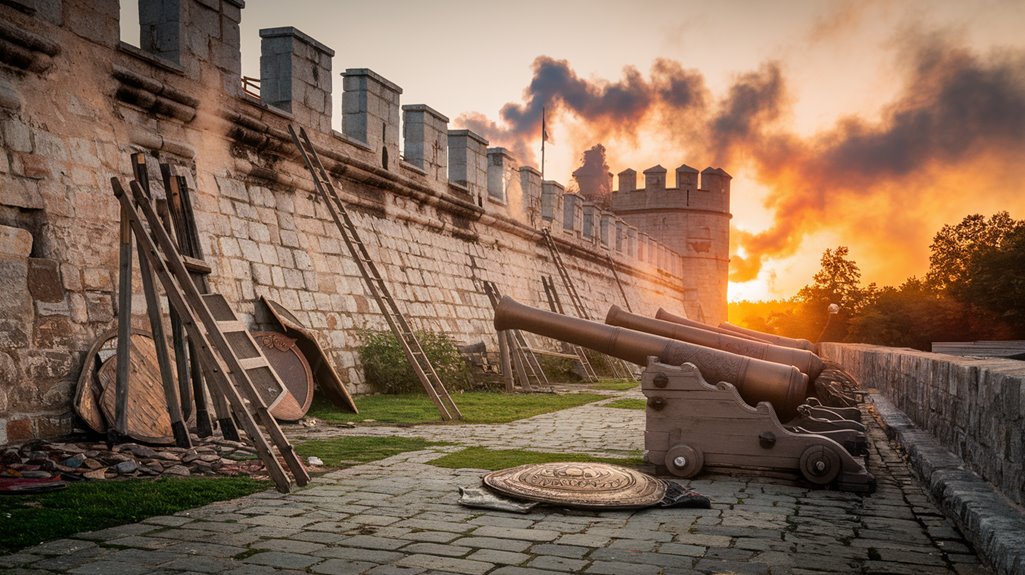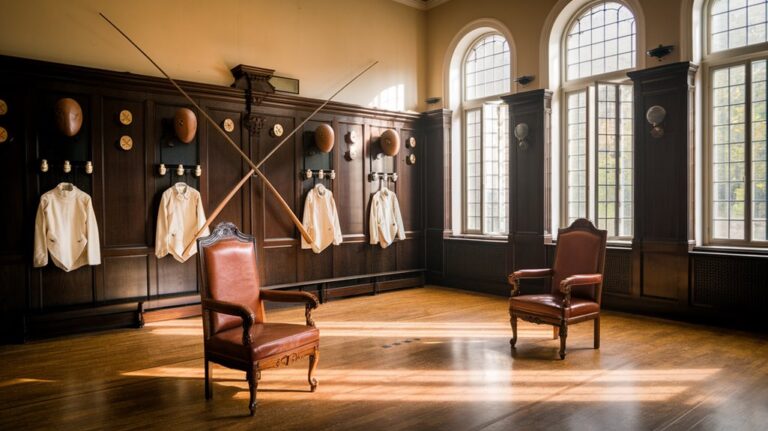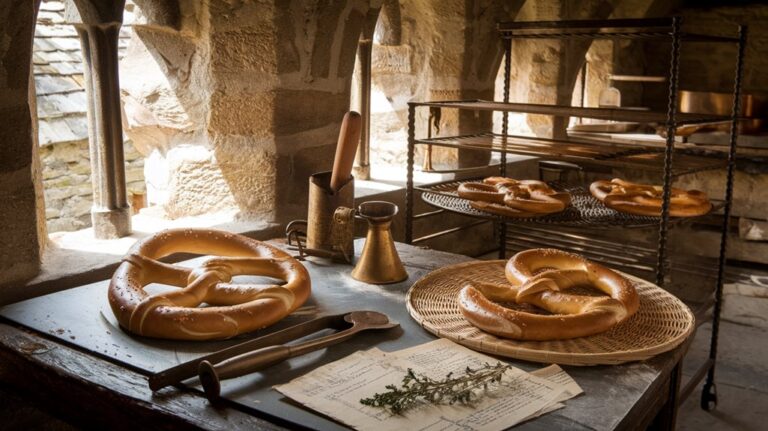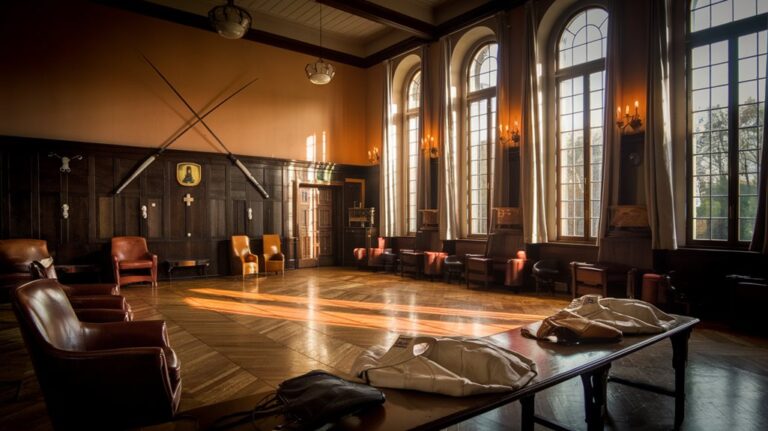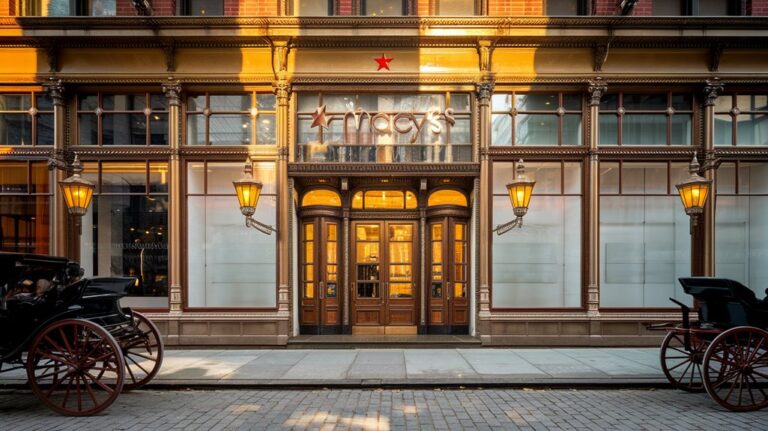The Most Epic Last Stand You’ve Never Heard Of
You've probably heard of the 300 Spartans, but there's an equally astounding last stand that history tends to overlook. In 1565, just 500 Knights of Malta and 6,000 soldiers faced down an Ottoman force of 40,000 elite troops bent on conquering their island fortress. The odds seemed impossible: 80 to 1. Yet what unfolded over the next four months would become one of the most remarkable sieges in military history, forever changing the balance of power in the Mediterranean.
The Siege That Shook the Mediterranean
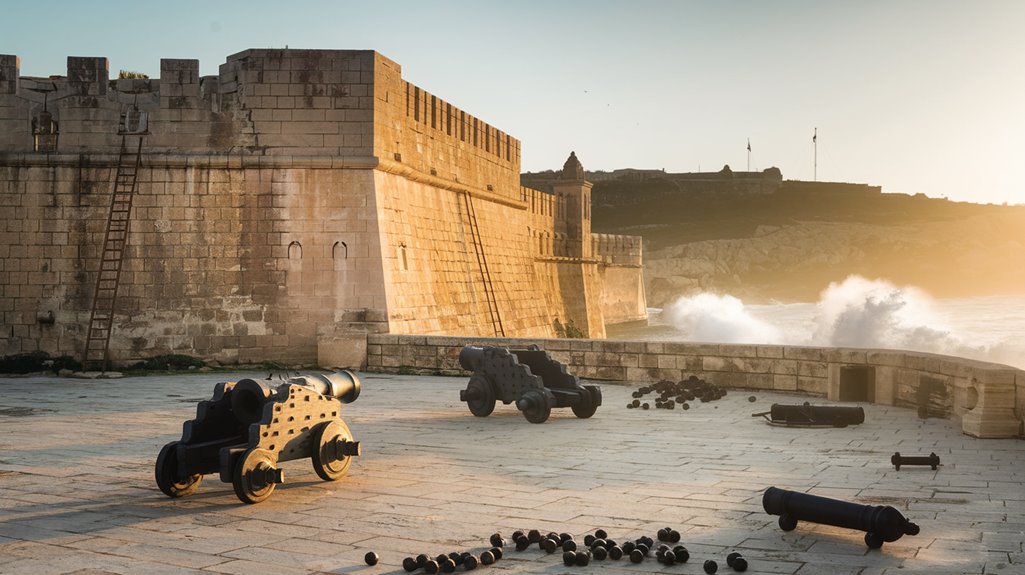
While the Mediterranean had witnessed countless battles throughout history, none would prove as pivotal as the Great Siege of Malta in 1565.
Ottoman ambitions to dominate the western seas hinged on capturing this strategic island, and they unleashed one of history's most formidable assaults with 40,000 men and a massive fleet. This pattern of Ottoman expansion would continue, as demonstrated when 60,000 troops invaded Crete in 1645.
You might think the Knights of Malta stood no chance, but they'd prepared meticulously. They poisoned wells, harvested crops to deny the enemy resources, and fortified their positions. Led by the brilliant Jean de Valette, the Knights would prove their worth against overwhelming odds.
What followed was an extraordinary four-month struggle, with over 130,000 cannonballs raining down on the defenders.
The siege aftermath reshaped Mediterranean power dynamics – the Ottoman defeat halted their western expansion and secured European interests, leading Queen Elizabeth I herself to acknowledge its monumental significance for Christendom.
The Knights Who Defied an Empire
Founded in the 11th century, the Knights of the Hospital of Saint John evolved from humble beginnings into one of history's most formidable military orders.
You'll find their true test of strength during the Great Siege of Malta in 1565, where their Knights' resilience faced off against overwhelming Ottoman forces.
When the Ottomans launched their invasion, they didn't expect such fierce resistance. The Ottoman strategy focused on capturing Fort St. Elmo first, but the Knights made them pay dearly for every inch of ground. Much like the defenders at Thermopylae, they used the narrow terrain features to their advantage.
The capture of the sacred holy vessel Sultana by the Knights provoked Ottoman forces to respond with massive force.
Using Greek Fire and brilliant defensive tactics, the Knights held St. Elmo for a month against relentless assaults. Even after St. Elmo fell, the defenders' sacrifice had so depleted Ottoman forces that their commander questioned whether taking the larger Fort St. Angelo was worth the cost.
Inside the Ottoman War Machine
Three pillars formed the backbone of Ottoman military might: a massive standing army, an advanced naval fleet, and an intricate command structure that revolutionized warfare in its time.
You'd find an impressive Ottoman hierarchy where the Sultan commanded everything from elite Janissary forces to naval squadrons, with Turkish officers dominating the upper ranks. The empire's first major military success came during the Byzantine expedition in 1300. Even during long marches, the army maintained strict discipline with total prohibition of alcohol and remarkable quietness.
Military conscription drew soldiers from diverse ethnic backgrounds, creating a formidable force that mastered combined arms tactics.
You're looking at an army that didn't just rely on brute force – they employed sophisticated flanking maneuvers with Sipahi cavalry and built extensive field fortifications.
While the empire eventually declined due to internal conflicts and economic strain, at its peak, this war machine was nearly unstoppable, utilizing cutting-edge military innovations that would influence warfare for centuries to come.
Tactics and Strategy: The Grand Harbor Defense
Much like the Ottoman Empire's sophisticated military hierarchy, harbor defense systems required intricate planning and coordination to protect essential maritime positions.
You'll find that defensive innovations evolved rapidly as new threats emerged, from long-range artillery to aerial attacks.
Maritime strategy centered on creating layers of protection through strategically placed batteries, underwater mines, and observation posts.
You'd see disappearing gun emplacements cleverly concealed from enemy view, while elevated positions gave defenders significant advantages in spotting approaching threats.
These defensive networks weren't static – they'd to adapt constantly to counter new weapons and tactics. The emphasis on strong natural positions proved crucial for maintaining effective harbor defenses.
Just as UNT Digital Library serves users from over 200 countries, harbor defense systems required global awareness and accessibility to maintain effective maritime security.
The key to success lay in combining multiple elements: range-finding technology, reinforced concrete structures, and mobile response units, all working together to create an impenetrable shield against potential attackers.
Heroes of the Fortress: Tales of Valor
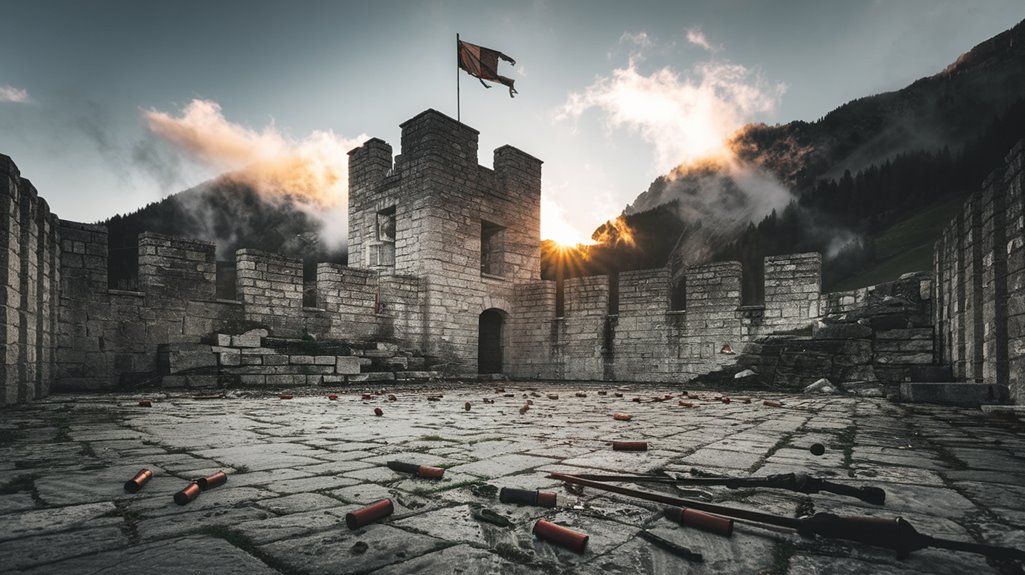
Throughout history's most desperate hours, soldiers have demonstrated extraordinary valor by holding their ground against overwhelming odds.
You'll find no better examples than the heroic sacrifices at battles like Saragarhi, where 21 Sikh soldiers faced 10,000 attackers, or Thermopylae, where 300 Spartans became unforgettable legends.
These warriors knew surrender might mean death, yet they chose to stand their ground. Their resistance often stemmed from the knowledge that execution awaited captives, as history had shown repeatedly.
At Rorke's Drift, 139 British troops repelled thousands of Zulu warriors. During the Battle of Mogadishu, two American snipers, MSG Gordon and SFC Shughart, gave their lives protecting a downed pilot.
Such actions transcend mere military strategy – they've become powerful symbols of human courage and sacrifice. Like featured articles on Wikipedia, these accounts required multiple reliable sources to verify their historical accuracy.
Even in defeat, these defenders achieved immortality through their unwavering commitment to duty and honor.
 contaminating vital wells to limit the Ottoman army's access to water. Through systematic inquiry, historians have meticulously reconstructed the events and strategies of this remarkable siege.
contaminating vital wells to limit the Ottoman army's access to water. Through systematic inquiry, historians have meticulously reconstructed the events and strategies of this remarkable siege.
The cultural impact of this epic defense continues to captivate minds today:
- Voltaire declared it as one of history's most well-known sieges
- The battle transformed Malta's landscape with its iconic fortifications
- The siege inspired countless literary works and historical accounts
- The victory marked the beginning of Malta's golden age
You can still witness this legacy in Malta's architecture, literature, and national identity, reminding you of the moment when a small force changed the course of Mediterranean history.

